Making a budget is a chore. It is quite time-consuming, whether you’re saving money to pay rent on an overpriced studio with a view of a dirty alley or trying to become an internet businessman—or both at the same time. There are ways to make things less crazy. But there is no way to completely avoid making a budget without hurting yourself in the long run. This is especially true in Google Ads, formerly known as Google AdWords. With every click, your business either grows or your hard-earned money burns. Unfortunately, there aren’t many resources that cover PPC budgeting. No app’s free.
Table of Contents
What is a Google Ads budget?
In Google Ads, which used to be called Google AdWords, a budget is how much your business wants to spend on an ad campaign daily over 30 days or a month. Even though your daily budget may change, you will never spend more than your total budget.
How do Google Ads campaign budgets work?
Check out this example to better understand how campaign budgets work in Google Ads: An online store wants to get the word out about its new line of shoes, so it launches an advertising campaign. The store decides to put $300 per month into the budget. The Company figured out that its daily budget is $9.80 based on its monthly budget. What did the store do to get to $9.80? First, they took 30.4, the average number of days in a month. Then, they took their monthly budget of $300 and divided it by the average number of days in a month, which was 30.4. This gave them $9.80.
Learn More: Google Search Ads Agency
How to Determine How Much to Spend on Google Ads Using One Simple Formula
Want to know how to figure out your Google Ads budget like an online store? Use this method:
- The monthly budget divided by 30.4 equals the daily budget.
- But some companies do it the other way around and use this formula:
- Estimated daily budget times 30.4 to get a monthly budget.
If you use the above formula, you’ll need to look up the average cost-per-click for your keywords, which you can do with a PPC tool like Google Ads Keyword Planner, so you can figure out how much your ideal number of clicks will cost.
How much should you spend on Google Ads for my business?
It’s hard to give a single answer about how much to spend on Google Ads that works for every business. Your Google Ads budget depends on how much your average sale is worth and how much your company spends on marketing. For example, a car dealer should expect to spend more than a store that sells clothes. After all, an investment of $20 per customer yields a great return if the average customer spends $20,000, but not if they only spend $15. Because of this, we’ve seen our clients succeed with budgets ranging from $500 to $30,000 per month, though the average midsized business invests $9000 to $10,000 per month.
Define the purpose of your campaign and the people you want to reach with it
Knowing why you would like to run your campaign in the first place is crucial. For the record, what exactly are you hoping to accomplish? To get started with a realistic budget, you need to have a crystal-clear image of your target audience’s habits, passions, location, and technology use. Allow these considerations to enter your thoughts while you put together your strategy, since it is impossible to establish a budget without understanding why you’re advertising in the first place.
The popularity of a brand
If you want to reach as many individuals in your demographic as possible over the next 20 days, you need to get your ad in front of as many of them as possible. Verify your familiarity with these individuals and that they know your existence.
Successfully generating leads
The following week, you should aim to get 200 new clients or 100 new people to complete your online survey.
- Determine a target that will help you generate prospects.
- Attracting New Customers While Optimizing Return on Investment
- Targeting 10 new clients in a week at no more than $350 per client is one example (CPA).
How much should I invest in a PPC strategy?
When you have completed narrowing your target demographic, you will likely want to know where to put your money for the best return. We want to avoid going in blind and blowing up the whole money with little success. Hence, it would be best if you tried to deduce the following: Amount per day required to start spending on Google Ads.
Read More: Google Ads Strategy 2023
How much money can you afford to spend each month on Google Ads?
- Three factors determine the amount you spend on Google Ads:
- The value of your industry’s primary search term
- the proportion of visitors that convert on a website
- A measure of how much money you may expect to make off of each client over time (LTV)
- Imagine you want 300 daily clicks on an ad that costs $0.25 per click.
Daily cost estimates may be derived using the following data:
.25 x 300 = $75
If your maximum cost per click (CPC) is $25, then that’s the most you’d pay here. However, depending on the specifics of the ad auction, the amount you may wind up paying per click may vary.
To simplify things, know that if you cap your CPC at 25 cents, you’ll never spend more than that. You may end up paying less.
- The Math Behind AdWords Budget Estimators
- Travelers needed to accomplish your mission:
- Demanded foot traffic = essential customers/conversion rate
- If you know how much traffic you expect and the average CPC, you can use the following formula to figure out a good budget
- Needed traffic multiplied by the going rate per click equals the cost.
- You may apply that formula twice to estimate the high and low ends of a range
- The most expensive formula is the greatest necessary traffic multiplied by the most expensive average cost per click.
The cheapest campaign budget results from multiplying the traffic needed by the average cost per click.
The calculation to determine the LTV of your clientele
Consider consumer LTV before committing to a price (lifetime value). To put it another way, this is the total lifetime value you anticipate from each client. This is the total amount of money you can expect to make in the future from each client. It includes recurring income, upsells, additional purchases, customer referrals, and so on. Return on investment (or LTV) is calculated by dividing annual customer earnings by the length of time a customer has been a customer. If you expect a customer’s lifetime value to be $10,000, it makes the most financial sense to spend $1 per click. However, if your client’s lifetime value is $10, you’ll know that paying $1 per click is quite a bit. The worth of your consumers is all you need to know to determine how much you should spend on pay-per-click advertising.
AdWords: Where to Begin Your Budget
You may estimate how much it will cost to attract at least 100 people to click on your ad by calculating the cost per click (CPC) for a certain number of keywords. For a higher return on investment, though, you should spend as much as you can afford on advertising in the future. Get at least three advertisements out there and see which gets the best results.
Keeping this in mind, a Google AdSense budget of $1,500 per month would be appropriate if the average CPC of three of your ads is $5. Your AdWords account’s budget must be entered daily. To accomplish this, divide your monthly budget by 30. Your first foray into business may not result in a profit. It’s not often that a company gets its advertisements just right the first time they run them. Consider the first three months of your campaign an experimental period to gather data for further ad optimization.
Tips for Planning Your Google Ads Budget Over the Long Term
Once you have sufficient information about your conversion rate, click-through rate, usual cost per click, and customer value, you can design ads that are very likely to be successful. Consider it this way:
If you have a high conversion rate and are making a good profit from your current campaign costs, you may have a good reason to increase those costs. The number of people who buy from your high-return marketing campaign will always go up directly to how much money you put into it. Find out more about making the most of your PPC spending.
To what extent can you anticipate profit, and how can you do so?
Finding out your AOV from prior orders is the first order of business. This sum is derived from the average amount spent on each online or mobile app order.
- Your Company’s AOV may be determined using the following formula:
- Incoming Cash/Total Orders Received
- From here on out, you may anticipate your earnings to be:
- Productivity equals new customers multiplied by the average order value.
If our average order value is $600, and you anticipate 100 new clients in the next two weeks, you would need to advertise the discount to a wide audience. This is how you may figure out your anticipated earnings:
- Revenue Forecasting Formula: New Customers x Average Order Value
- Earnings Estimate = $600 x 100
- Profit Estimate = $60,000
- Now, let’s say CPC is between $2 and $2.5.
- And the lowest traffic you may anticipate is 2,500 users, with a peak of 5,000 users.
- 5000 × 2.5 = $12500
- In the worst case, 2,500 times two is $5,000.
- The advertising campaign might cost anything from $6,000 to $30,000, with an average of $9,000.
How can you figure out your Return on Ad Spending (ROAS)?
Here is the method you should use to get your return on ad spending:
Ad Spending as a Percentage of Revenue
You’ll have to do the math twice: once for the small advertising budget and once for the large budget. Consider a range of $5000 to $12,500 for your advertising budget, based on the prior calculations we made. Then, your numbers will look like this:
- A return on investment of $12,500 is low because ($60,000 – $12,500) / $12,500 =
- = 380%
- A high return on investment is $60,000 minus $5,000 divided by $5,000.
- = 1100%
- With these numbers, your ROAS might be anywhere from 380% to 1100%.
How can you figure out my EPC (earnings per click)?
To get your EPC, multiply your conversion rate by the value of a client. The rate at which people click on your ad and then purchase is your conversion rate. To determine how much a customer is worth, you subtract the cost of making them happy from the total money you make from getting them as a new client. Therefore, your equation would look like this:
- Value to the Company x Conversion Rate
- For example, let’s say that a typical client generates $100 at 1%. Because of the exchange rate, your EPC is $1.
What Are the Steps to Finding your CPA?
The formula for determining your CPA is as follows:
The ratio of new customers to sales and marketing expenses. If a company has one salesperson who makes $70,000 per year and spends $10,000 per year on business expenses like gas and office supplies, and if the Company spends an additional $100,000 per year on marketing to bring in four new customers per month, the CPA can be calculated as follows:
Every 500 new customers acquired annually will cost $80,000 in sales and $100,000 in marketing, or $360 per client. The cost of acquiring a client is a key metric for determining whether the marketing effort is profitable. A client acquisition cost of $360 is a lot of money; therefore, you’ll need a very profitable product to justify it. Knowing your cost per acquisition and how much money you expect to make from the campaign will help you decide where to put your resources.
In your campaign, the question is: should you use a joint spending plan?
With Google Ads, you can manage your budget in two ways: set a daily budget for each campaign or utilize a shared budget to distribute funds across numerous ads. A shared budget is a way to go if you want to maximize your ad clicks within a fixed budget, but don’t have a lot of time to set up and manage separate campaign budgets. Have a sizable budget set up that may be divided among many campaigns. Not many people would like to split a hundred dollars a month between different advertising efforts. There can’t be any wiggle room in the budget.
Let’s pretend you’ve got two campaigns, each receiving $100 per day. It’s possible that on a given day, fewer people see one ad and fewer people click on it, resulting in a far smaller spend of $80. By combining both campaigns into one common budget, Google Ads would be able to use the remaining $20 to further boost the performance of the latter. If you use a central budget for many projects, you might not have to change each one by hand during the day. So, if your budget is enough and your work is going well, you might think about switching to a shared budget.
The best way to make your finances and business productive
Don’t forget that your PPC spending limit and your bids are, in many respects, identical. Both factors influence ad placements in their ways. So, to get the best outcomes, you should focus on improving both. The Google Ads budget simplifies optimization by considering how much money can be allocated to ad campaigns. However, bidding often requires many levels of planning. Planning successful campaigns requires careful thought about several things, including how bids might affect available funds. Remember this as well:
The percentage of your budget you end up with depends largely on the bid you put in. With a $1.50 CPC bid instead of a $3.50 CPC offer, a $1,000 budget will go much further. Keep an eye on your long-term objectives and the money you have at your disposal. We can use this as a jumping-off point. While doing keyword analysis, you can see your average bid per term to understand your potential budget better.
Takeaway
Just enough to see whether your current promotion, sales process, or product offering needs any fine-tuning. Once you’ve figured out what works, you can throw all your money at it if the business is making money. The Google Ads Budget Calculator will help you maintain a consistent advertising approach despite unforeseen spending fluctuations.





